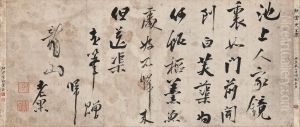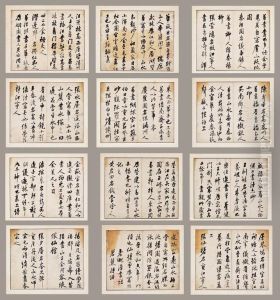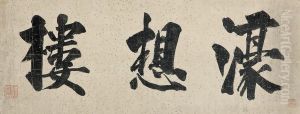Kim Jung Hee Paintings
Kim Jung Hee, also known by his pen name Chusa, was a prominent Korean scholar, calligrapher, and painter of the Joseon Dynasty. Born in 1786 into an erudite family, he was well-educated in the classics and demonstrated extraordinary talent in calligraphy from a young age. His work is characterized by a unique style that combined the elegance of the traditional Chinese script with a distinctively Korean aesthetic, contributing to the development of a national identity in Korean calligraphy.
In his lifetime, Kim Jung Hee was recognized not only for his artistic achievements but also for his scholarship. He passed the civil service examination with high honors, which opened the door to various governmental positions. Despite his success, he became involved in political controversies, which eventually led to his exile. His time in exile was one of the most productive periods of his artistic life, as the natural surroundings and emotional experiences influenced his art, leading to the creation of many of his masterpieces.
Kim Jung Hee's legacy is multifaceted. His calligraphic works, such as the famous 'Chusa Cheonsanbyeolgok,' are considered national treasures in Korea and are studied for their innovative approach to the art form. He was also a pivotal figure in the Silhak movement, a Korean Enlightenment movement that emphasized practical learning and was critical of the rigid Neo-Confucian doctrines of the time. His intellectual contributions and his calligraphic innovations have had a lasting impact on Korean culture. He died in 1856, but his influence continues to resonate in the fields of Korean art and intellectual history.


